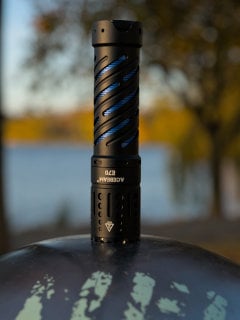Stacked camera sensors have been a thing for a while now; they have improved sensitivity to light by stacking translucent photodiodes on top of each other.
The Nichia 719A is the inverse; translucent LEDs are stacked on top of each other (in a single package) for increased intensity.


Ooof that’s a big swing. It might even be more or less throwy than XP-L HI/XHP35 HI depending on the flux lottery.
Plus with 3000k/4000k high CRI SFT-40 coming out there’s going to be even more competition for warm/neutral, high CRI throwy goodness. Of course I wouldn’t expect the tint to be much better than SST-20 4000k (fingers crossed, but it is luminus we’re talking about here lol). Maybe there will be something similar to the FA4 bin.
So, biggest advantage I see 719A potentially holding on to is consistency in tint. XP-L HI has some consistently awesome bins, but also some bad ones, and I don’t know if theres a lot of 90 CRI ones with good tint, only 80 CRI. XHP35/.2 HI is much more of a lottery than XP-L HI in my experience - some fantastic, some pretty green. There might be a consistently good bin, but afaik there’s still availability issues with finding consistently good tinted XHP35 HI’s in large numbers, especially in 80 or 90 CRI.
So if 719A can have the same consistently good tint that other nichia LEDs manage, then it makes a good case for itself, as long as it can get close to as throwy as XP-L HI/XHP35 HI.
But yea, if the performance isn’t there, or is wildly inconsistent, then that could really make it meh central.
But if ZL are putting in the successor to the sc64w HI, then my hopefully guess is that performance is at least competitive.
Yeah it’s probably not likely you will get one that is to either of the extremes of the flux range, but technically it’s possible. It makes sense considering they are stacking 2 dies. So each die on its own has a ±5% flux? I’m really interested in knowing how they make these and how exactly they work. Like does one die have more impact than the other die? If the bottom die has low flux is that better or worse than the top having low flux? Lots of questions in my mind about these things.